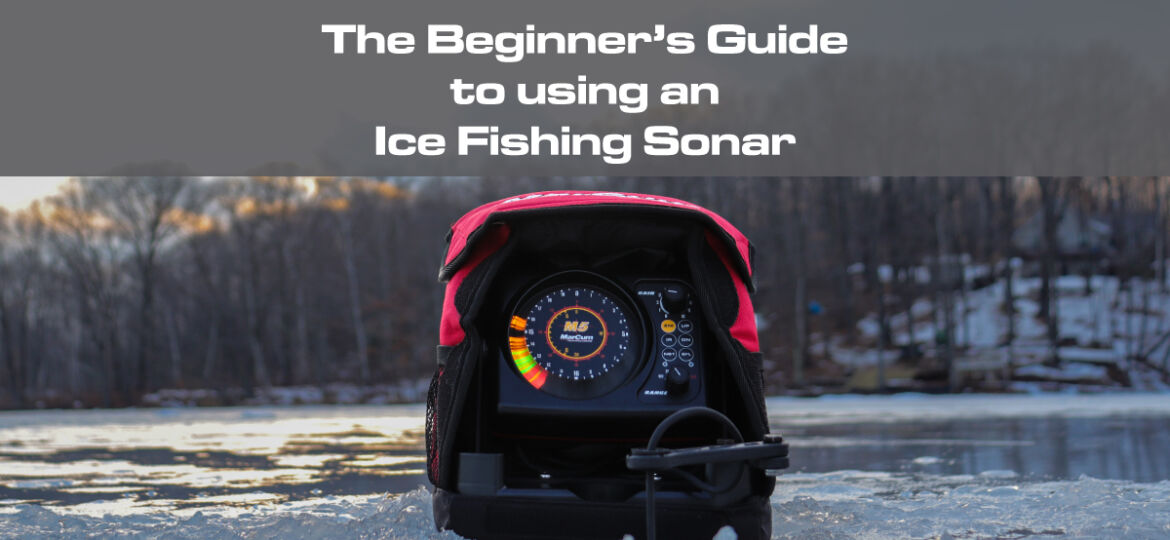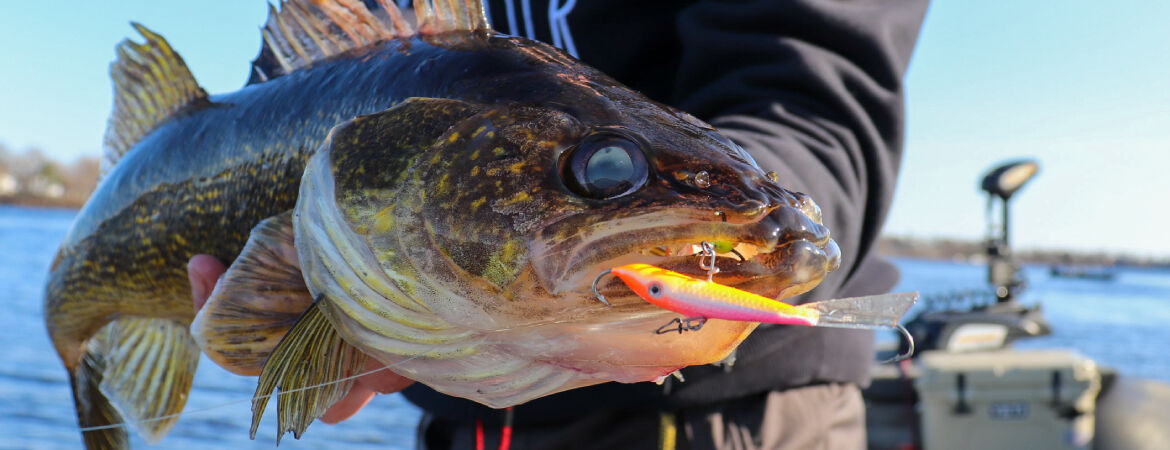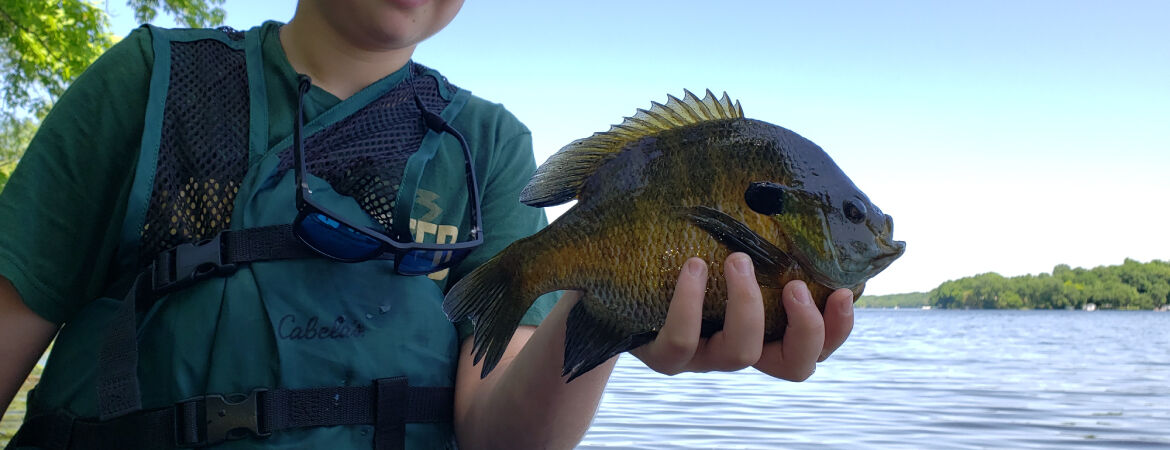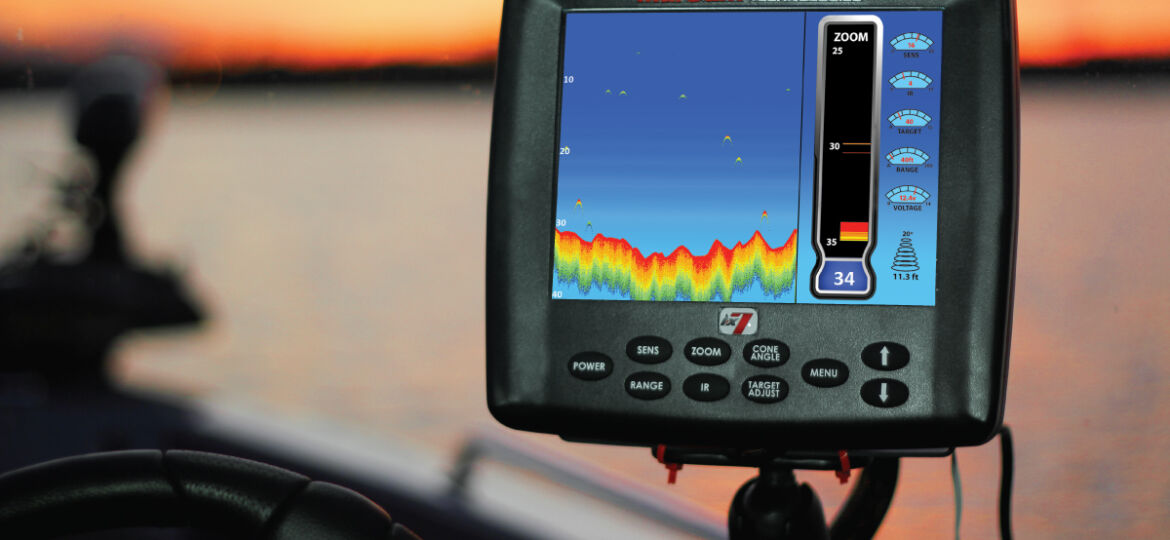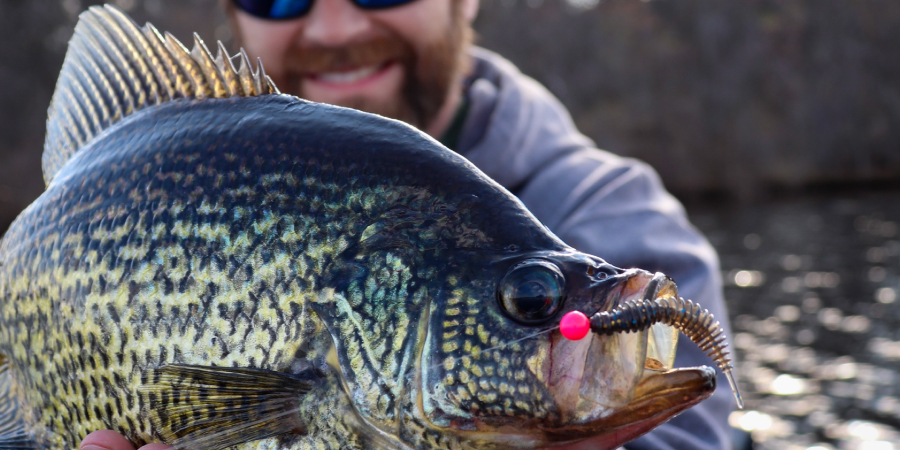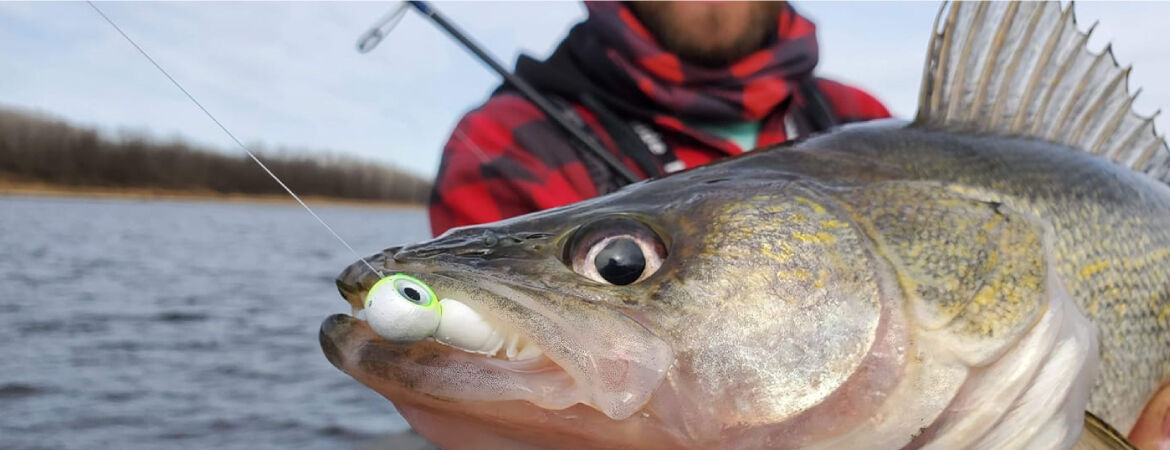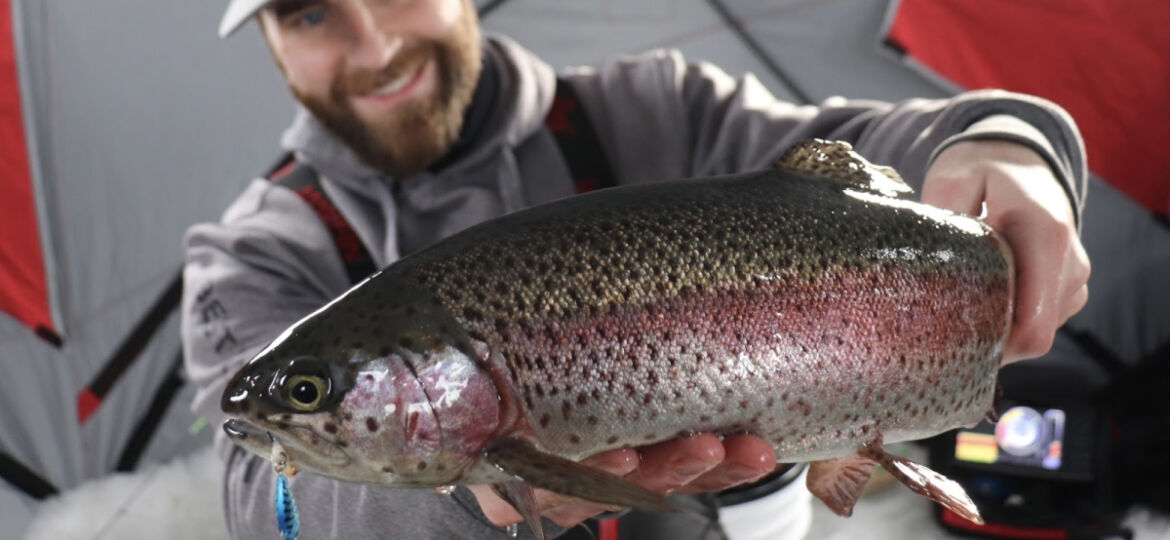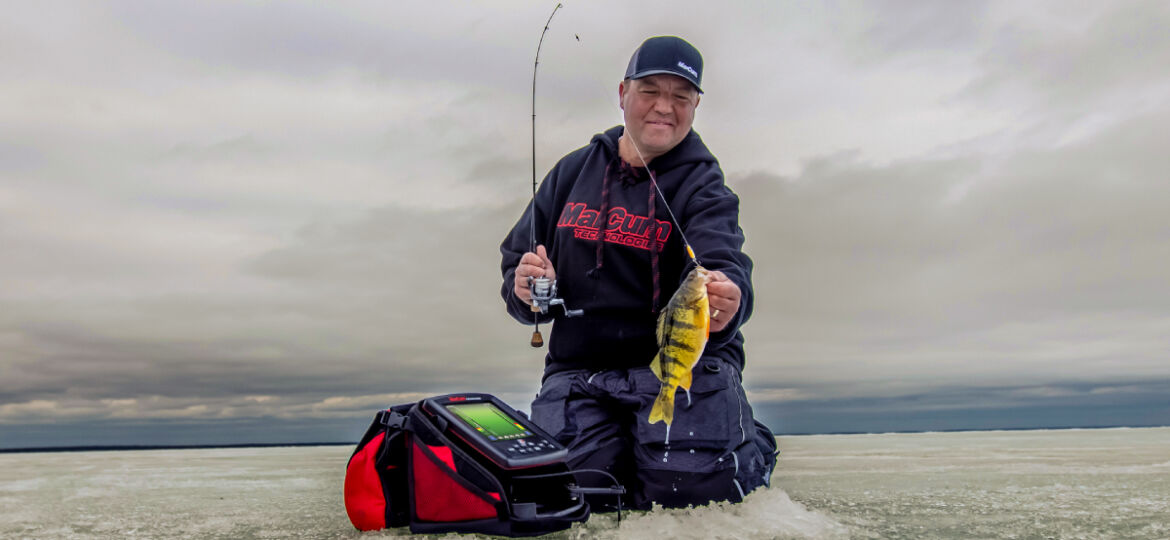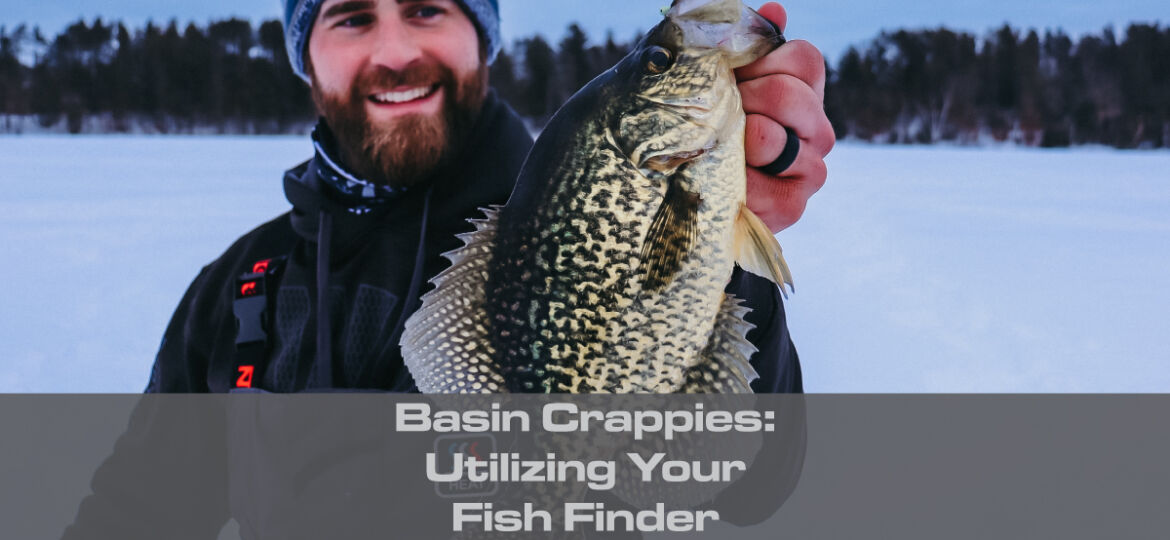Every year, a new set of anglers both young and old learn to use ice fishing sonar or flashers for the first time. That said, I encounter many anglers on the hardwater each year that still have their ice sonar depth finder on default factory settings from when they bought the unit 10 years ago. Whether you’re brand new to the game, or it’s old-hat, here are some answers to age old questions along with new ones to keep it interesting and catch more fish.
Mist from the baitcast reel erupted into the morning air as the crankbait rocketed toward the conspicuous riprap that hugged the edge of the river. As soon as the lure hit the water it was brought to life with a few cranks on the reel.
Instantly the wobble of the lure going back and forth could be felt in the rod tip. It didn’t take very long for the lipped crankbait to start digging in the rocky bottom. Tick, tick, wham! Fish on as the lure got to the edge of the swifter current and it feels like a good one as the fluorocarbon line is being stretched by the bull-dogging fish in the current.
Water temperatures that build into the high 60 and 70 degree marks will definitely get fish moving, and that usually coincides with a few hatches.
Bugs crawling out of the deep mud get rafted against the main-lake structure, and signify some of the initial pushes to offshore humps, bars, and reefs. It’s often when casual walleye anglers, or those who see early mixed bags of walleyes with crappies and gills, stop catching them.
Anglers don’t always follow, sometimes because they’re not required to. This is a dynamic time of year as the summer food chain ramps up production. That means anglers don’t always have to look deep to find fish, and several patterns can be going at the same time.
If you’re a crappie angler, one of the best bites of the year has come and gone with the early spring crappie bite. For bluegill fans, the best is yet to come, as we move from a shallow water period for one species into another.
There’s no doubt that the spawning season for crappies and bluegills offer some great opportunities for skinny water panfishing, and even sight fishing, which makes fishing feel like it did when you were a kid.
Bobbers and small jigs are plopped into any good looking developing weeds or brushy areas, only to drop with an aggression not seen since the previous year’s fishing It’s hard not to be excited about it.
It’s this time of year when our ice sonar is swapped for long rods and soft water, but that doesn’t mean your MarCum should be put in the back corner of the garage. All sonar systems, digital or mechanical styles, offer keys and cues that help anglers be more successful on the water
That’s especially true in small crafts like kayaks, canoes, or small skiffs where a larger, permanently mounted traditional LCD display isn’t in play. Here’s just a few ways to trick your craft, whatever it may be, and get the very most from your MarCum.
the lakes will be full of life in many forms once again. Boating enthusiasts will now start thinking of getting the boat out of storage and planning the maiden voyage of the year. And anglers eager to fill a live-well know that the crappie are heading for the shallows and it’s time to go fishing. Early fishing brings the big crappies into the shallows. Find where to go and what to use to make your early crappie fishing trip a success.
Minnesota’s early May fishing opener is a date most avid walleye anglers have circled on the calendar, but long before May is the pre-opener down on Pool 4 of the Mississippi River. Warm spells in February, all the way through the traditional opening day, offer anglers a great chance at not just knocking the rust off, but catching both numbers and size for walleye and sauger both.
As Joel Nelson says, “There’s no better feeling than the slight “tick” of the rod tip or a line-jump as a shallow-water walleye inhales some plastic. “
Some of the more neglected targets during the ice season are stream trout species – rainbow trout, brook trout, and brown trout more specifically. Countless states across the Ice Belt spend significant amounts of time and resources to ensure there are catchable trout opportunities available to many anglers.
Preparation, location and presentation all play a role in success for winter stream trout.
Tony Roach is no stranger to that game, as he fishes across northern Minnesota each winter, doing his best to put clients continuously on panfish, perch, and walleyes. It should come as no surprise then that underwater viewing systems are a key part of his strategy, and have been since their inception.
His camera and digital sonar approach mimics his now-famous “ice-trolling” concept of roaming select structural elements while drilling holes continuously, in an effort to both locate fish and stay on them. Few have drilled as many holes in the hardwater as Tony, and fewer yet have followed that up with as much underwater viewing as he has either.
The upshot is a 1-2 punch of underwater viewing and sonar that focuses on two main parts; the finding, and then catching, each of which utilizes different strong-suits of cameras and traditional sonar.
It’s midwinter. Lakes are locked up with a solid layer of ice. Shanty towns dot the landscape – filled with anglers that are willing to trade long rods for those of a shorter variety. Panfish – crappies in particular – are some of the most targeted species throughout the hard water season. Knowing how to find them and which tools to use will ultimately make for a more successful day on the ice.


